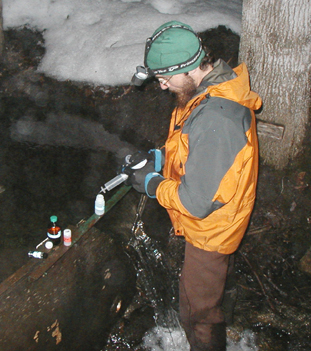|
Sleepers River Research Watershed (SRRW), in the Northeast Kingdom of Vermont, is one of five sites of the USGS Water, Energy, and Biogeochemical Budgets (WEBB) program. Sleepers River is a 111 square kilometer basin of mixed forest and dairy farm landscape. SRRW was founded in the late 1950s as an Agricultural Research Service (ARS) watershed. The ARS established 17 stream gages in basins of various size and land use, and 15 meteorological stations. The USGS started at the site in 1991. We conduct multidisciplinary research on hydrologic and biogeochemical cycles. We primarily use the small watershed approach, whereby we quantify net fluxes of water and solutes by computing the difference between outputs in streamflow and inputs in atmospheric deposition. The net fluxes provide a starting point for more detailed investigation. We use a combination of physical, chemical, and isotopic approaches to identify water sources and track water flowpaths from precipitation and snowmelt, through the subsurface, to the stream. In particular, we have investigated the timing and magnitude of hillslope water contributions to streamflow and mixing processes in the riparian zone. We have used 18O/16O of water, Sr and Pb isotopes, N and O isotopes of nitrate,13C/12C, 34S/32S, and 35S activity to identify solute sources and to estimate water age and solute residence times in forested catchments. More recently, we have investigated mercury movement in streamwater in forested and agricultural landscapes. In keeping with the global climate change mission of WEBB, we maintain and analyze long term hydrologic and climatic data base, a principal reason Sleepers River was chosen for Global Change research.
Web links:
USGS Sleepers River Website
|




